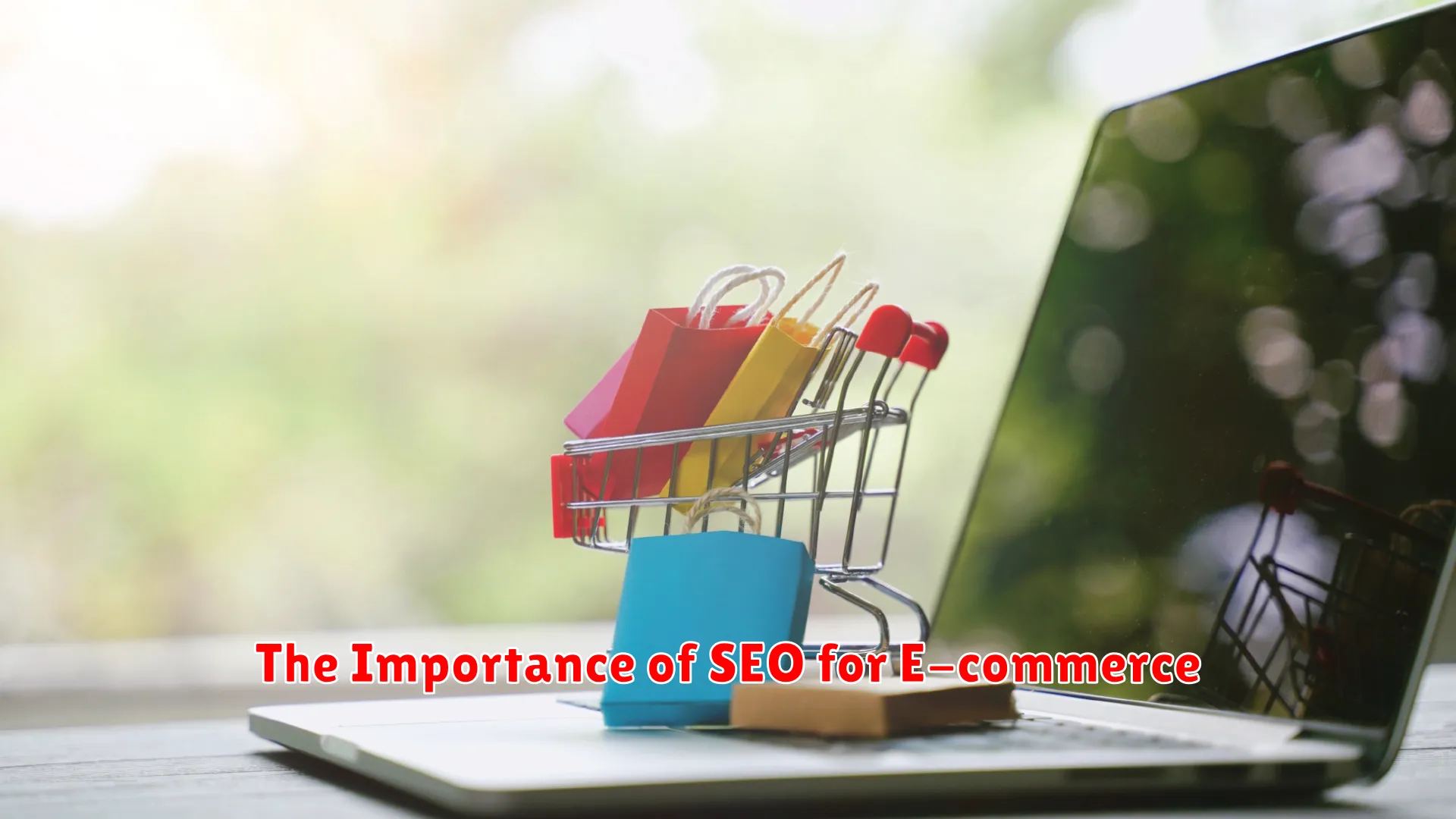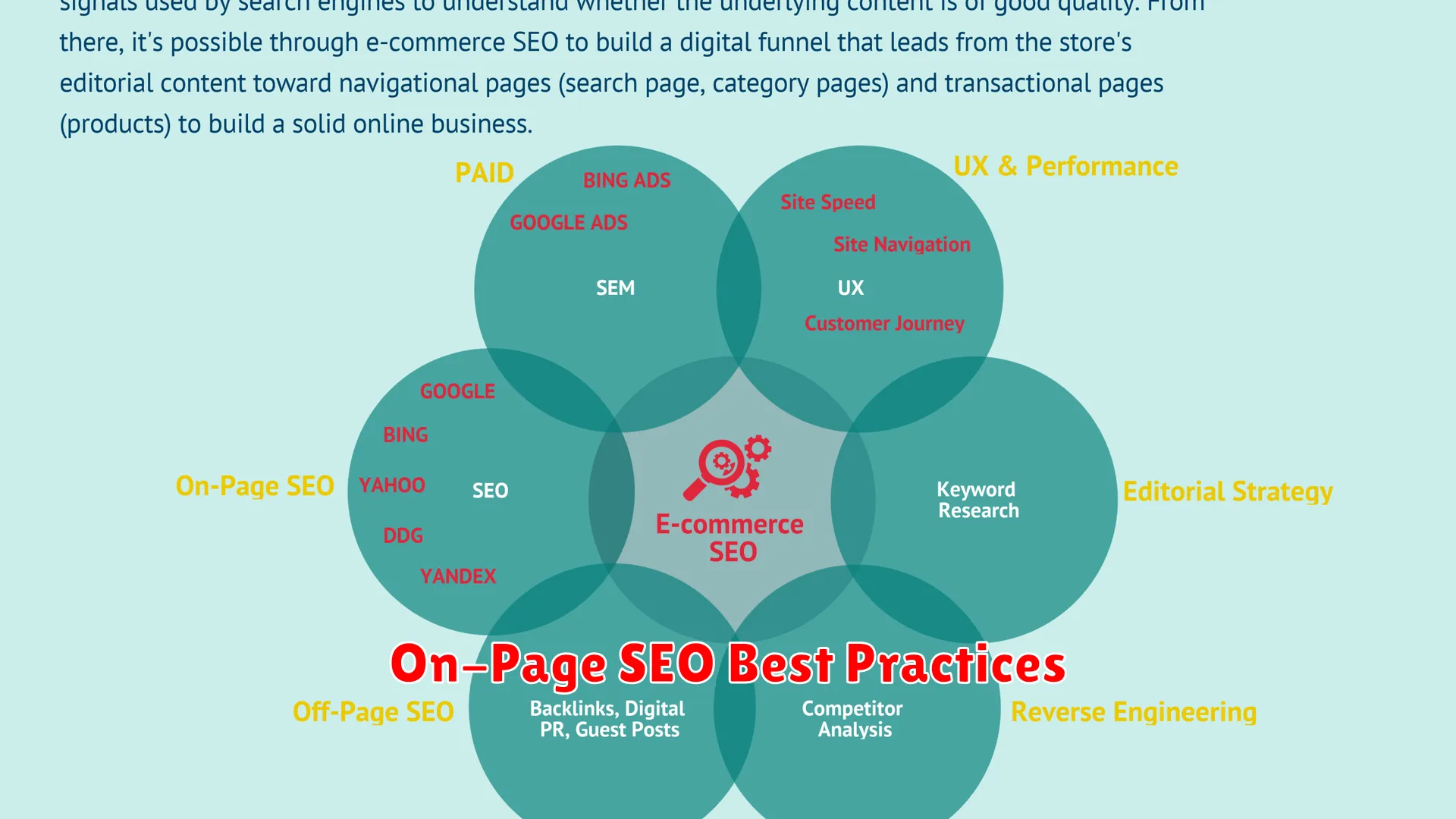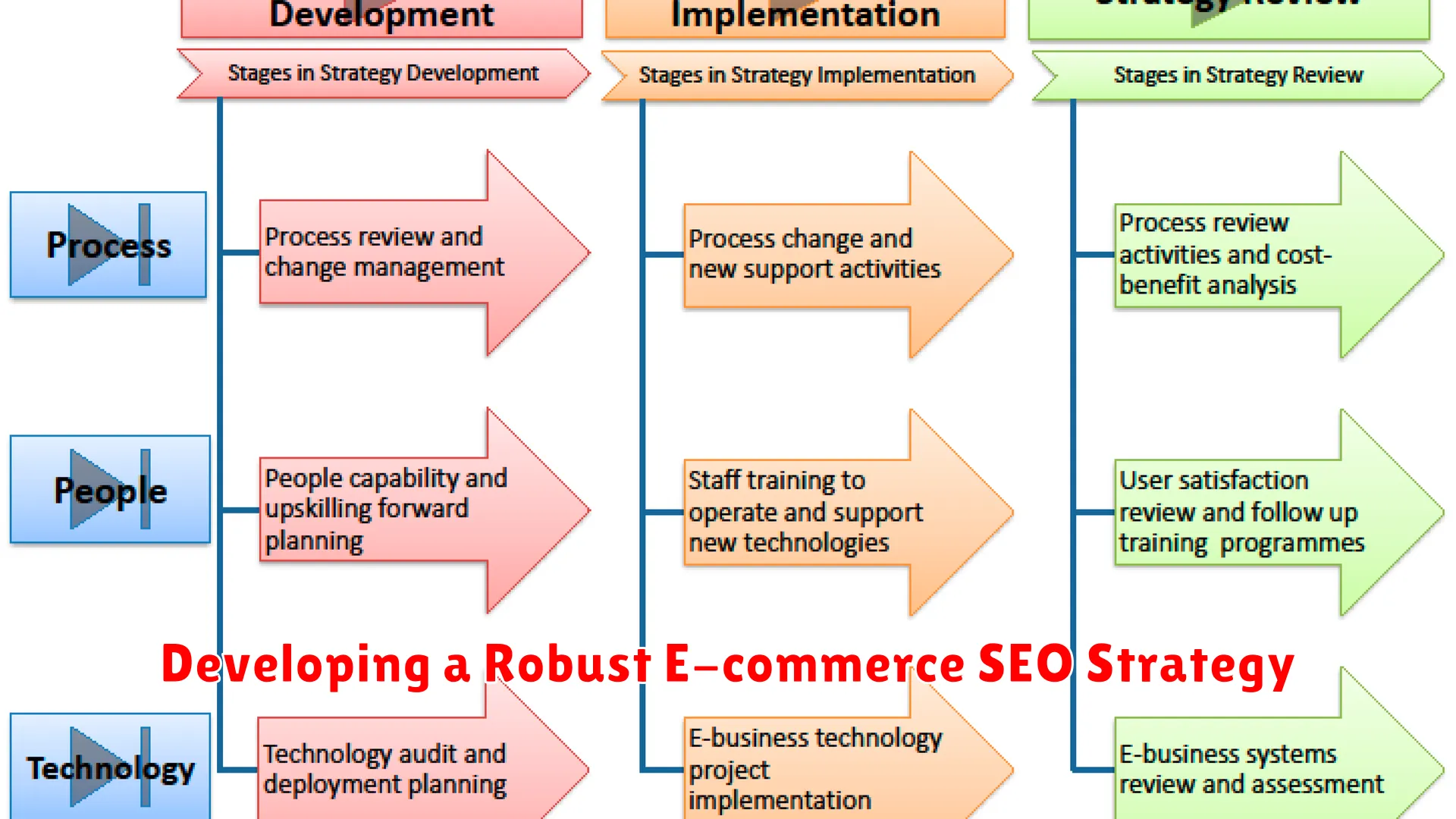In the competitive world of e-commerce, a robust SEO strategy is crucial for online success. This article explores key tactics and best practices to help businesses enhance their online visibility and drive traffic to their e-commerce websites.
The Importance of SEO for E-commerce

SEO, or Search Engine Optimization, plays a crucial role in the success of any E-commerce business. In today’s digital age, where online shopping has become increasingly prevalent, a strong SEO strategy is essential for E-commerce websites to stand out and attract potential customers.
Visibility and Ranking: Implementing effective SEO techniques helps E-commerce sites improve their visibility on search engine results pages (SERPs) and achieve higher rankings. This is vital as the majority of online shoppers tend to click on the top results displayed by search engines.
Targeted Traffic: By optimizing keywords related to their products or services, E-commerce businesses can drive targeted traffic to their websites. This means attracting users who are actively searching for what they offer, increasing the likelihood of conversions.
Enhanced User Experience: SEO also focuses on enhancing user experience by improving site speed, mobile responsiveness, and overall usability. A well-optimized website provides visitors with a seamless browsing experience, encouraging them to explore and make purchases.
Competitive Edge: In the highly competitive E-commerce landscape, having a solid SEO strategy gives businesses a competitive edge. By outperforming competitors in search engine rankings, E-commerce sites can attract more potential customers and grow their online presence.
Long-Term Benefits: Investing in SEO for E-commerce offers long-term benefits. Establishing a strong online presence through effective SEO strategies can lead to sustainable growth, increased brand credibility, and a loyal customer base over time.
Keyword Research for Product Pages

When developing a robust e-commerce SEO strategy, an essential component is conducting thorough keyword research for product pages. This process involves identifying and targeting specific keywords that potential customers are likely to use when searching for products you offer.
Search Intent: It is crucial to understand the search intent behind the keywords related to your products. Are users looking to make a purchase, compare products, or gather information? Tailoring your product page content to match the search intent can significantly improve your SEO performance.
Long-Tail Keywords: Incorporating long-tail keywords, which are more specific phrases that typically have lower search volume but higher conversion rates, can help you target niche audiences and drive qualified traffic to your product pages.
Competitor Analysis: Analyzing the keywords that your competitors are ranking for can provide valuable insights for optimizing your own product pages. Identify high-performing keywords in your industry and strategically implement them in your content.
Tools and Resources: Utilize keyword research tools such as Google Keyword Planner, SEMrush, or Ahrefs to discover relevant keywords, search volumes, and competition levels. These tools can help you refine your keyword strategy and stay ahead of the competition.
Optimization and Monitoring: Continuously monitor the performance of your chosen keywords and optimize your product pages accordingly. Regularly review and update your keyword strategy to ensure that your e-commerce website remains visible and competitive in search engine results.
On-Page SEO Best Practices

When developing a robust e-commerce SEO strategy, implementing on-page SEO best practices is crucial to enhance your website’s visibility and ranking on search engine results pages. Here are some key tips to optimize your on-page SEO:
Create High-Quality, Relevant Content
Content is king in the world of SEO. Ensure your e-commerce website features relevant, informative, and engaging content that resonates with your target audience. Use strategic keywords naturally within your content to improve search engine visibility.
Optimize Meta Tags and Descriptions
Meta tags and descriptions are vital for communicating the content of your web pages to search engines and potential visitors. Craft compelling meta titles and descriptions that accurately represent your pages and entice users to click through.
Utilize SEO-Friendly URLs
Ensure your e-commerce website uses SEO-friendly URLs that are descriptive and include relevant keywords. Clear and concise URLs not only benefit SEO but also improve user experience by providing insight into the page’s content.
Optimize Image Alt Text
Images play a significant role in enhancing user experience and SEO. Optimize image alt text with relevant keywords to improve accessibility and help search engines understand the content of your images.
Improve Site Speed and Mobile Responsiveness
Search engines prioritize websites that offer fast loading speeds and mobile responsiveness. Optimize your e-commerce site’s performance to provide a seamless user experience and boost your search engine rankings.
Internal Linking and Site Structure
Implement strategic internal linking to connect related pages within your website. A well-structured site with coherent navigation not only enhances user experience but also helps search engines crawl and index your website more effectively.
Technical SEO for E-commerce Sites

When it comes to developing a robust SEO strategy for your E-commerce website, paying attention to technical SEO is crucial. Technical SEO focuses on optimizing the technical aspects of your site to improve its search engine visibility and user experience.
Here are some key technical SEO practices to help boost your E-commerce site’s performance:
- Optimize Site Structure: Ensure your site has a logical structure with clear navigation. Create an XML sitemap to help search engines index your pages effectively.
- Mobile-Friendly Design: With the increasing use of mobile devices, having a responsive design is essential for SEO. Make sure your site is mobile-friendly and offers a seamless user experience across all devices.
- Page Speed Optimization: Improve your site’s loading speed by optimizing images, enabling browser caching, and reducing unnecessary scripts. Faster loading times not only enhance user experience but also positively impact SEO rankings.
- Schema Markup: Implement schema markup to provide search engines with additional context about your products, pricing, ratings, and more. This can improve the visibility of your E-commerce site in search results.
- Canonical URLs: Use canonical tags to prevent duplicate content issues and consolidate link equity to the preferred URL. This helps search engines understand the primary version of your product pages.
- Secure Website: Ensure your site has an SSL certificate to provide a secure browsing experience for users. Secure sites are favored by search engines and can lead to better rankings.
Measuring SEO Success with Analytics

When developing a robust e-commerce SEO strategy, one of the crucial aspects to consider is measuring the success of your efforts. This is where leveraging analytics tools becomes essential to gain insights into the performance of your SEO tactics.
1. Tracking Key Metrics
Analytics tools such as Google Analytics and Google Search Console enable you to monitor key metrics like organic traffic, keyword rankings, click-through rates, and conversion rates. By tracking these metrics regularly, you can determine the effectiveness of your SEO strategy and make data-driven decisions to enhance your e-commerce website’s performance.
2. Setting Goals and KPIs
Establishing clear goals and key performance indicators (KPIs) is essential for measuring SEO success. Whether it’s increasing organic traffic, improving keyword visibility, or boosting sales, having specific objectives allows you to measure progress and determine the impact of your SEO efforts.
3. Analyzing User Behavior
Understanding how users interact with your e-commerce site is critical for optimizing SEO performance. By analyzing user behavior through analytics data, such as bounce rates, time on page, and conversion funnels, you can identify areas for improvement and tailor your SEO strategy to better meet user needs.
4. Conducting A/B Testing
A/B testing different elements of your website, such as title tags, meta descriptions, and product pages, can provide valuable insights into what resonates best with your target audience. Analytics can help you track the performance of these tests and determine which variations yield the highest results.
5. Continuous Monitoring and Adjustment
SEO is an ongoing process that requires constant monitoring and adjustment. By regularly analyzing analytics data, identifying trends, and adapting your strategy based on insights, you can ensure that your e-commerce SEO efforts remain effective and aligned with your business goals.
Conclusion
In conclusion, a well-defined E-commerce SEO strategy is essential for online businesses to achieve visibility and drive traffic to their websites.

